How to Gather Fabric with a Serger
This post may contain affiliate links which won’t change your price but will share a commission.
Serger owners: Did you know you can use your serger to gather fabric? Imagine the possibilities – no more knotted or broken threads when you gather fabric. It will be like you’ve died and gone to gathering Heaven. Now that I know how to gather on the serger, I will never go back.
Here’s a quick recap in case you don’t really know what a serger is or what it does. A serger is a unique sewing machine that cuts fabric and finishes seams at the same time. Most sergers will do additional edge finishes such as a rolled hem. Some fancy-schmancy sergers will do things like a chain stitch, wave edge, or cover stitch.
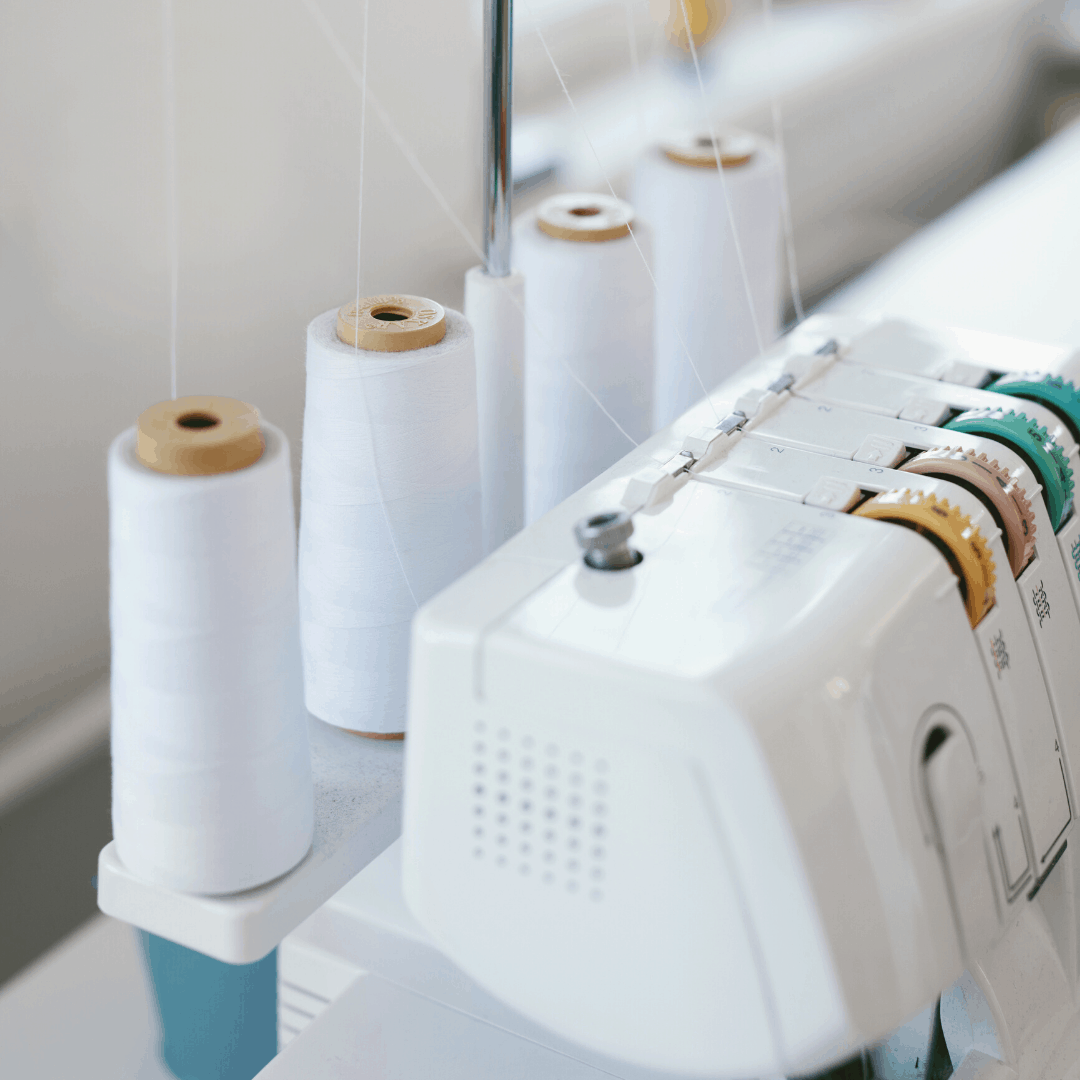
How to Gather Fabric with a Serger
Today, I want to show you how to use your serger to gather fabric. It is so unbelievably easy; you will never go back to sewing a double row of gathering threads. And, there are no special feet required ~ just your standard serger foot.
If you have a serger hidden away in the closet, now is the time to dust it off and put it back to work.
Step 1: Set Serger
Set your serger for 4-thread serging.
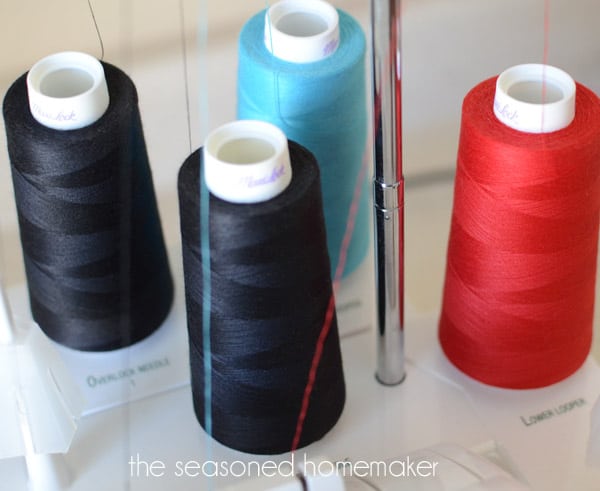
Step 2: Differential Feed
Increase your Differential Feed to the highest number ~ mine is a 2.
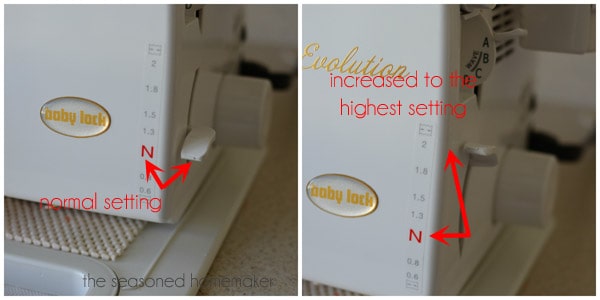
Step 3: Stitch Length
Increase your Stitch Length to the highest number – mine is a 4, but some sergers go up to 5.
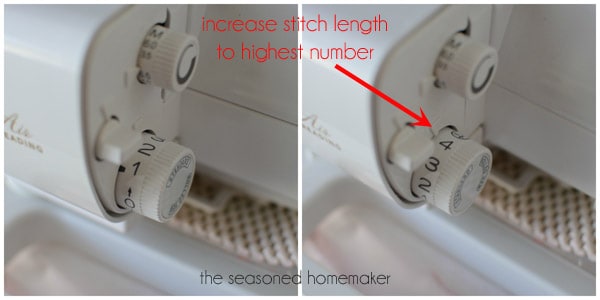
Step 4: Serge
Serge along the raw edge. You will notice that it does a little gathering. This is normal.
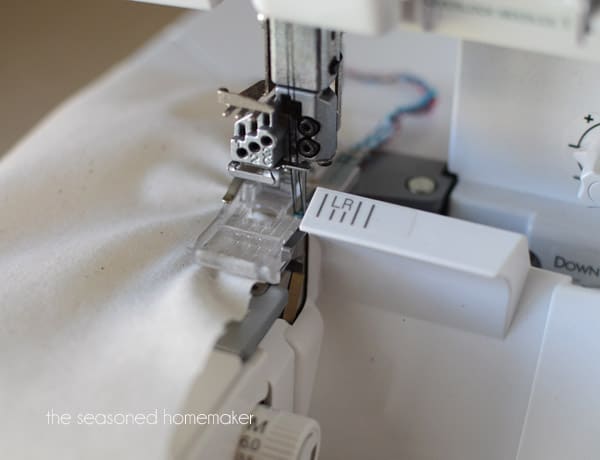
Step 5: Find Threads
Notice the two needle threads (the black threads). Near the fabric edge, put a needle underneath the two parallel threads. Be sure not to catch either of the looper threads ~ it will knot if you do. Just the needle threads.
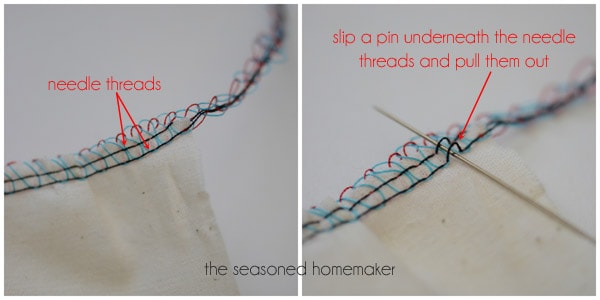
Step 6: Pull Threads
Pull the two needle threads out of the chain of threads. Do not let these get tangled. If you do this correctly, they will slip out easily.
Pull the two needle threads to gather your fabric.
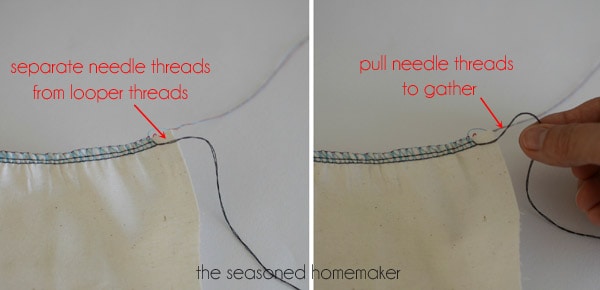
Step 7: Done!
Voila! You have nice, even gathers that can easily be adjusted and then attached. No stray threads that end up on the outside of your project. What’s not to love about this!
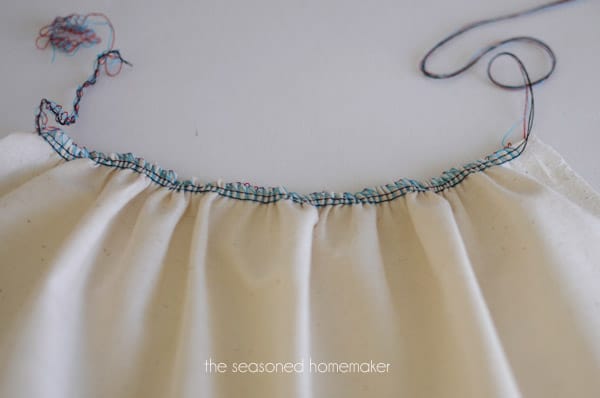
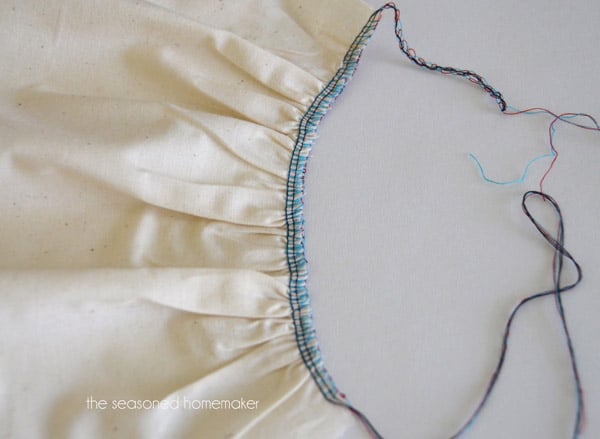
Sew, sew easy!


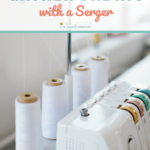
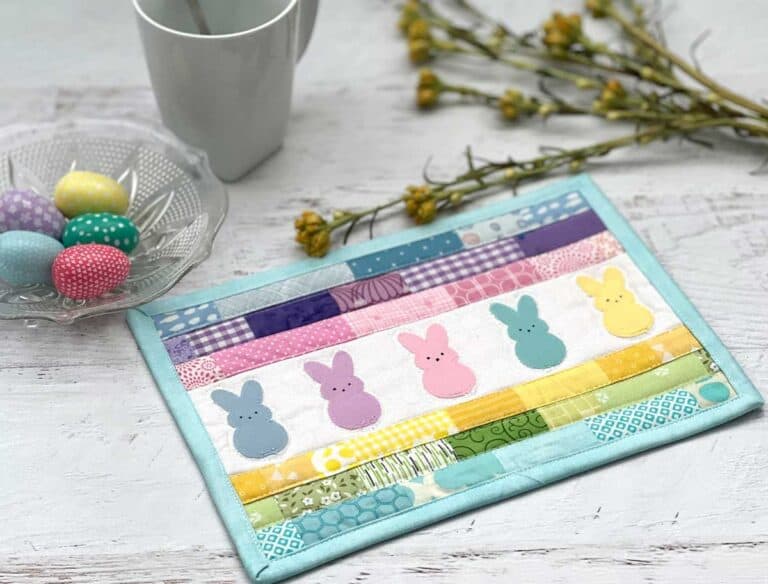
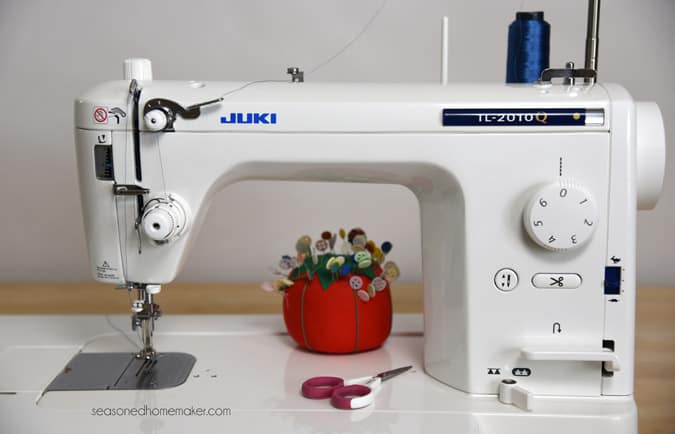
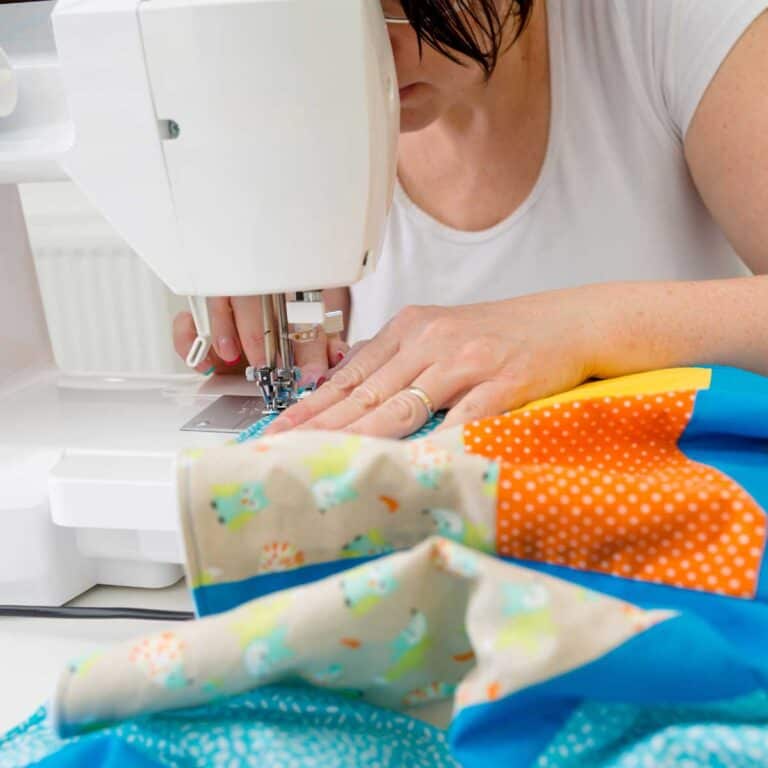
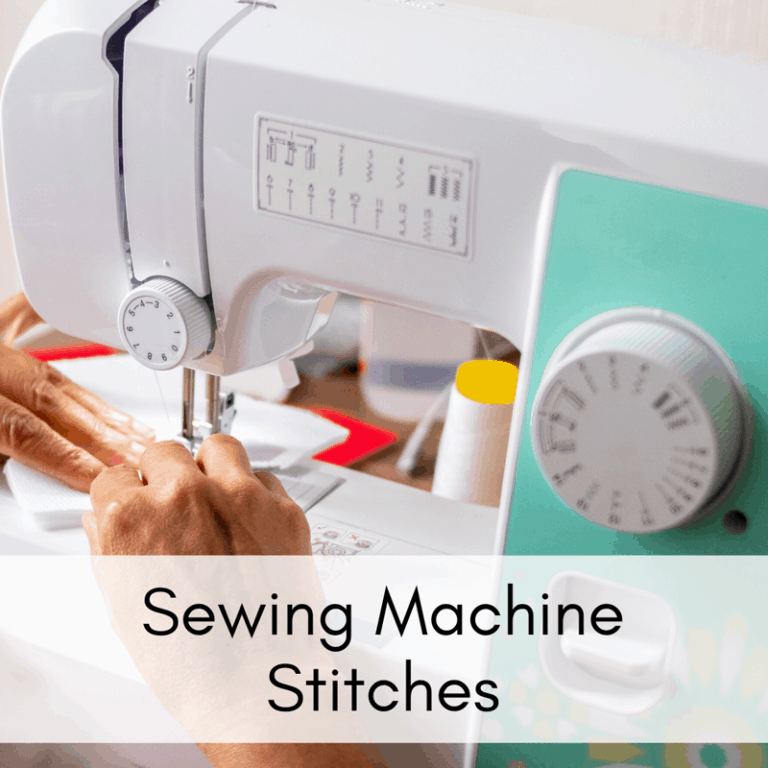

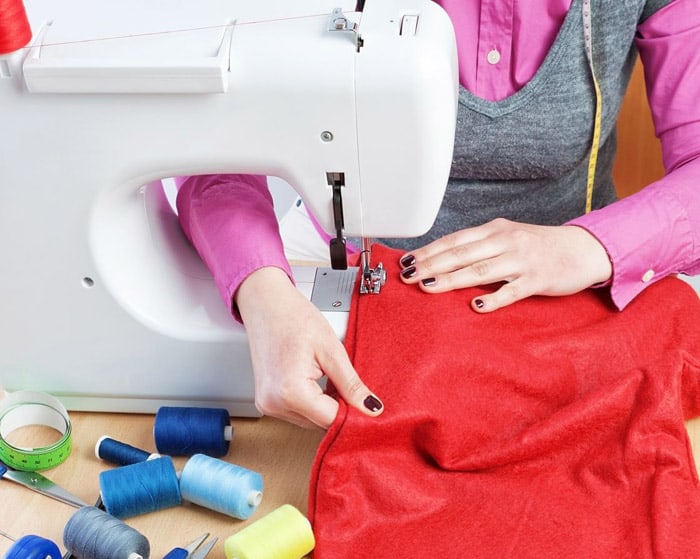
Nice tip! A real time saver…
I’ve pinned it because my serger’s teacher showed it to me, but this is a photo lesson!!! Really better 🙂
tx for sharing 🙂
MammaNene from
SergerPepper.blogspot.it
Thanks! It’s so simple, it’s crazy.
Is there a gathering foot for the serger?
a way of gathering without having to pull the threads
I am wanting to make a very full multi teared prairie skirt
I’m pretty sure that Babylock/Brother have a gathering foot. I recommend you check with a local dealer for your machine brand. They will know which foot works best for this.
Thank you Leslie!!!
My pleasure!
I think you just changed my life.
Glad I could make a difference.
Thanks for this tip.
Glad to help.
First visit, thanks for post on ‘gathering with a serger’ haven’t ever done that
Sew, so easy ~ you’ll never go back.
Thank you Leslie!! This is great. I’ve heard of doing this before but have never tried it!
It is beyond easy.
I have a mini surge machine, do you think this would work with 3 strands? or only with 4?
I think it would work with three threads ~ be sure to separate the needle thread and pull slowly. I am going to go try this now.
I just got a Serger, my granny’s actually after she passed away, and am such a novice at using it, but I am eager to learn!! Thanks for the tutorial. Now if I could just master threading it! Also, seems my seams aren’t real ‘tight’ when I sew them, as in, when you turn it over and press the seam open, it kind of shows the stitching. Not good. Any idea what might need adjusting? Visiting from Skip to My Lou and I will be back for more advice I am sure!
Thanks!
Congrats on getting your first serger. I also own a serger I bought in the mid-80’s. I totally understand fear of threading. Consult an online guide for your machine’s threading instructions ~
Try decreasing your stitch length to see if you get tighter seams. The machine may also need servicing. Good luck.
Thanks for pinning the post ~ I’ll be back at Project Inspire{d}.
I love this! Seriously? How did I not know this? THANKS!
You’re welcome.
Sergers can be very temperamental (at least mine can :). Thanks for this great picture tutorial. I know our readers will love it, too! We have a weekly Thursday (today:) link up party at allthingswithpurpose.com. We would love to see this post!! We are also your newest FB like 🙂
wow this seems like it would be a great one to know…but there wasn’t any pics? just writing..I have a serger but have yet to use it been reading/watching stuff on puter to know how to start to use it gotta get my confidence going
Hmmm. Not sure why the pictures aren’t coming through. Did you receive it through an RSS feed?
You are my new BFF. For real.
Awww. I can always use another friend.
Great idea! I remember being taught this in a serger class but had completely forgotten it. I enjoy making doll clothes and this will be a real time saver, especially for the dresses on the 8″ Ginny doll.
Thank you.
You’re very welcome. I never thought about doll clothes, but this would definitely be a time saver.
Do you have a tutorial on how to thread servers too? LOL I received a Janome Juno for Christmas and am still stuck. I love following your blog. Thanks for the tips. I do plan on using them soon!
I’m sorry to say I haven’t done a tutorial on threading a serger. Since each brand is a little different, I would look at the manufacturer’s website to see if they have tutorials for their different models. Also, if you bring your serger to a local dealer, someone should be able to help you with threading.
I have 2 Janome sergers and both have pictorial diagrams showing how to thread. One is a 4-thread and the other a 5-thread machine. Remember to start from the right side of the serger first and work to the left (at least mine work that way). I downloaded the manuals from Janome website for each machine I own. Although I have a paper copy it’s still nice to load the electronic copy and scroll down for what I need.
Hi Leslie
When I do gathering on my over locker (this is what a serger is called here in Australia) I do it slightly differently. The differential feed is still set to 2, you leave your looper thread tension as normal but you turn the tension on the needles UP (I set mine to about 8) and then you overlock as normal. With this method the fabric is actually gathered as you overlock. The amount of the gather is determined by the stitch length; the longer your stitch length the tighter the gathers. What I tend to do is to simply set the stitch length to it’s longest stitch and adjust the fullness of the gathers as necessary.
How to adjust the fullness of the gather – easy. I make sure I sew a long chain before I start overlocking and also sew a long chain at the end of the fabric. To easy the fullness you simply sort of ease the fabric back along the chain. Now that sounds complex but I am sure it will make sense once you actually do it.
I am not saying that this method is any better or worse than the method you currently using, simply that it is another option.
Kim
I makes sense to me. I’ve seen something like this demonstrated, too. Both methods are true time savers.
Thanks Kim, new to this and not sure what you mean by “to easy the fullness you simply sort of EASE the fabric back along the chain”; don’t know if you can explain it any better but I certainly appreciate your advice.
I have a very old serger that sews beautifully once I get it threaded!! It does not have the differential feed, do you think it would still work?
I’m not sure ~ why don’t you try setting the stitch length to the longest setting and serge on a scrap of fabric.
Thank you so much! I’ve been tying to gather a ruffle and threads kept breaking-I got so frustrated that I just put it away. Now, I’ve got to try this! lloks really easy.
You will never go back to the old way….I’ve never had a broken thread using this method!
Now I just need a serger!!
Wow! I did not know this, how awesome!! I will never gather on the sewing machine again! Thank you!!
I knew there were lots and lots of you out there who didn’t know this. And, it is the easiest thing ever!
Wow, I wish I’d known this years ago. Thanks for sharing. Pinning!
Thanks for pinning!!!!
Will this work with heavier fabrics like cotton duck? I make slipcovers, and making a gathered skirt is a huge pain. I’ve never used a serger but have considered getting one.
I’m sure it would. You will have to adjust the presser foot for heavier fabrics.
Oh wow, thank you….I will have to pin this so I’ll have it on reference.
Wow….this is a GREAT tip! I am going to give it a try next time I need to gather something! Thanks for sharing!
I have never seen this done and it sounds like a time saver. I never got lessons when I bought my serger. I have always zig-zagged over a piece of string with the widest stitch zig-zag stitch and then pulled that to get desired ruffle but this would be easier. Thanks!
I promise, you will never go back to the old way again ~ it’s really that easy.
Thanks so much. This is a wonderful technique. I tried it right away. I was using a jersey knit, which was a little tricky for a first run, but it worked and I was able to attach a gathered skirt to a yoga waist band in a fraction of the time and without having to set up my sewing machine just do the gathering!
I hate doing gathers BUT I own a serger, so I pinned this for future reference!! Thanks so much!
You don’t know how happy I am that I have come across your blog, and THIS post specifically!
Love this! But I have an older serger (a New Home) that doesn’t have a differential feed. What can I do to adjust tension discs for gathering? (I’ve misplaced my serger manual.)
Three questions:
Does it matter what the thread tension dial settings are?
Should the seam width finger be set in the “R” or “S” position?
Is there a type of thread best suited for gathering, the way woolly nylon is great for rolled hems?
Regular serger thread is best for gathering. Your seam width finger should be set in the same position as you would for 4-thread serging.
I’ve been using a serger for a long time and I’ve never seen this tip before. Thanks so much for sharing. I’m going to try it out this weekend!
For those without a differential feed, just tighten your needle threads! You may need to put them on the highest setting. Practice and see!
This is AWESOME !! Thank you !!
Is a serger an overlocker sorry for my naivety.
Yes, they are the same thing, just called something different in other countries.
I never knew this and I have been sewing for 60 years! Will have to try it. To gather I usually do the zigzag trick….Thank you!!!
Thanks for sharing. Will be trying this.
Leslie, thank you so much for this guide. I’ve been teaching my kids about gathering fabrics and this came in handy.
Hi Leslie,
I have loved your blog since I started sewing about a yr and a half ago so I was happy that this post came up when I was searching google for help with a skirt I’m making for my daughter. I’ve now gathered it 3 times (the third time using this method- so much easier!). Gathering hasn’t been an issue, but when I try to serge the gathered skirt to a yoga type waitband I’ve been running into trouble. The gathers either jam up my serger or the pressed foot smooths them out as I go, leaving a gap of fabric at the end. I’ve tried loosening the pressure on the presser foot, but I’m still having issues. It’s a 100% cotton knit with a good bit of stretch one way and not much stretch at all the other way. I’m sewing the direction that has plenty of stretch, if that helps. Hopefully you have some advice!!!
This sounds like a differential feed issue. You may need to adjust your settings.
Hi, thanks for your help; may I ask what your tension settings are?
My serger is a Babylock Evolution which sets tension automatically and I never know the actual numbers. That said, I’d go with your machine’s default tensions and you should be fine. All I change is the differential feed (to highest number) and the stitch length (to highest number).
I have read in the manual and seen in the introductory video that the serger could do this. But all the manual said was to differential feed to 2 (Baby Lock Lauren 450). It didn’t go in depth about it. I make tiered gather petticoats (like Butterick 4407 View D) and the tiered gathered broomstick skirts. I can’t wait to try this tip. I copied it to a Word Document to print to put with my manual next to my machine for reference. I’ll comment again once I’ve actually tried it (hopefully a little later this month).
I am so tickled with your picture tutorial.
Raising the differential feed to 2 would be correct. Be sure to increase your stitch length to the longest stitch length setting and it should work.
thanks for sharing these amazing sewing tips , i am quite naive in this but your tips certainly improve my work and interest.
What a great tip! I have been using a serger for a longtime and have never heard of this; something for me to work on this weekend. Thank you again.
Wow! Huge time saver.
I was about to set up my other machine just for a simple gather.
Thank you again for this photo lesson, super easy.
Momiala
Thanks so much for this. I’m looking to buy a serger but have no clue which one to go for. I would like to use it for making bloomers so would need it to be able to gather well. Do you have any tips on which model or brand to buy ?
I’m a big fan of Babylock sergers. I’ve owned two (one is 30 years old!) and have never had a single problem with either.
Here it is June 17, 2020, and it is still a great tip.. Have just been learning to use my 6yrs old serger which was hidden away in closet. But the practice piece gathered fine. Question, how do you know the width of the serging area, or seam? My Singer Manual has awful pictures and directons leave a lot unsaid. Thank you for this post, your site, and any help you can give. Jojo
Sorry to be off of this topic but I would like to know if Blueprint ever answered anything you wrote to them since May 31. I have emailed 3 times about important issues and have not received anything from them. Is there a way to contact them besides in their help section? Thank you for any help you can give me.
Crickets. That’s all I hear.
I can still remember when I realized you did not have to follow every pattern step in the order Simplicity laid it out!! This tip will be right up there with that for me. Thanks